Within the expansive crane family (Gruida), comprising six distinct genera, one prominent member stands tall: the common crane. Belonging to the Grus genus, this particular species boasts a unique status as monotypic, with five exclusive variations. Magnificent in size, the common crane graces the skies, embarking on arduous long-distance migrations, traversing Northern Europe, Central Asia, and East Asia with grace and elegance.

The Common Crane is a tall bird with long legs and neck that thickens at the junction with the shoulders and breast. The adults are mostly gray, with some birds having a tinge of gray-brown on their back. Their head and culmen are black, while their face and throat are black or dark gray until halfway down the neck where it changes to gray. Its crown has a bare patch colored deep red while the area behind its yellow eyes is bright white, extending to the nape and continues down the rear of the neck as a wide stripe, changing to grey where it meets the scapulars. The upper and lower wing areas are gray, with black and fingered tips on their flight feathers. When standing, you can see dark-tipped feathers bunched up and extending over the tail.

Their bill is medium-length, pale grayish-yellow, and its legs are thick, long, and dark gray. Both male and female adults are generally similar in appearance, but females are slightly smaller. Juveniles have a light to mid-brown color with a dull brown feathered head. The adult’s bare red area on the crown becomes discernible at the age of two and only appears fully when the bird turns three years old.
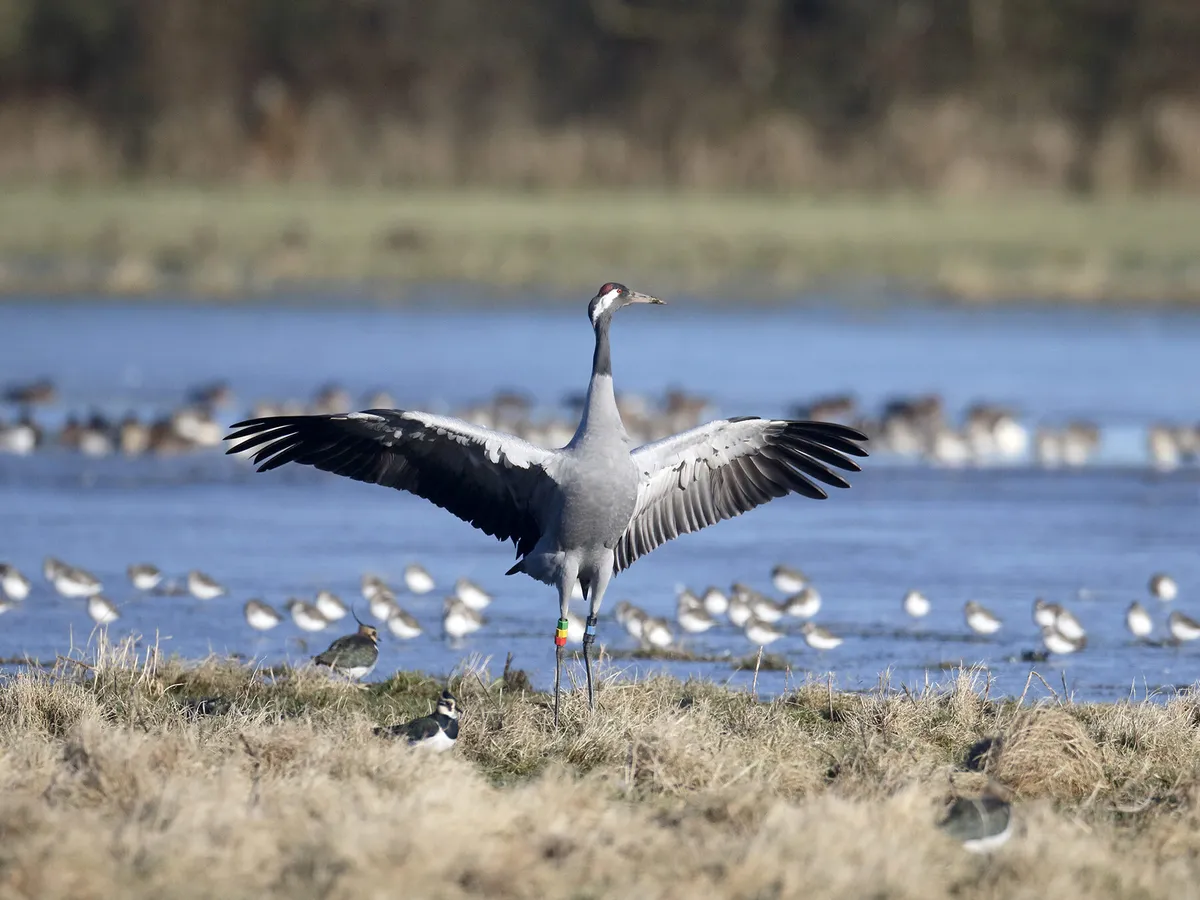
Have you ever wondered what sound a Common Crane makes? When these birds are in their breeding season, they perform a dance with their partners and make bugling or trumpeting sounds. However, when not dancing, their typical call is a loud and deep one that is often heard while flying. It sounds like “krra – krra”.
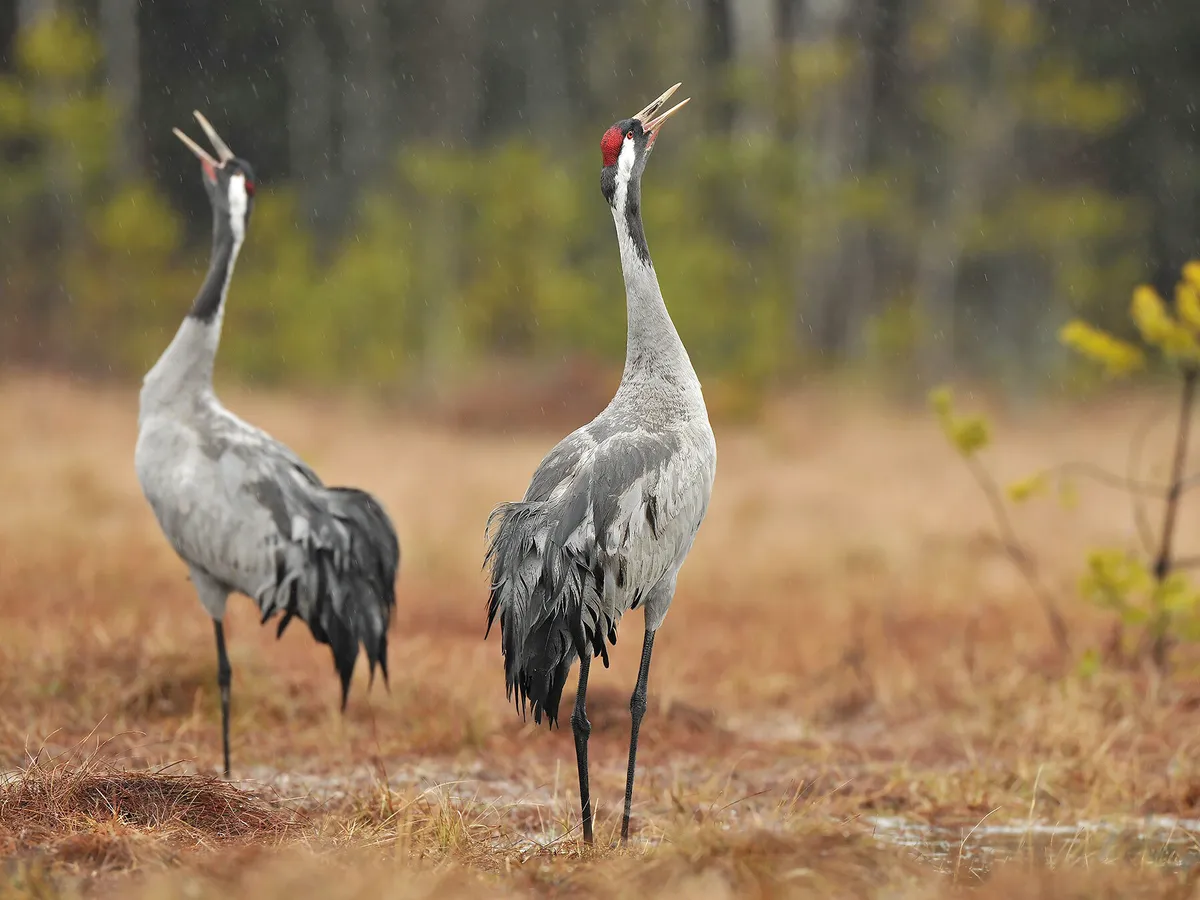
Have you ever wondered what Common Cranes like to eat? Well, these majestic birds are known to forage for their food on the ground or in shallow water. They can often be seen walking around in small groups while searching for their next meal. Their diet is quite versatile and includes grains, roots, aquatic plants, berries, leaves, grasses, and shoots. In addition, they also enjoy insects, worms, lizards, small fish, and even frogs. These beautiful creatures truly have a diverse palate!
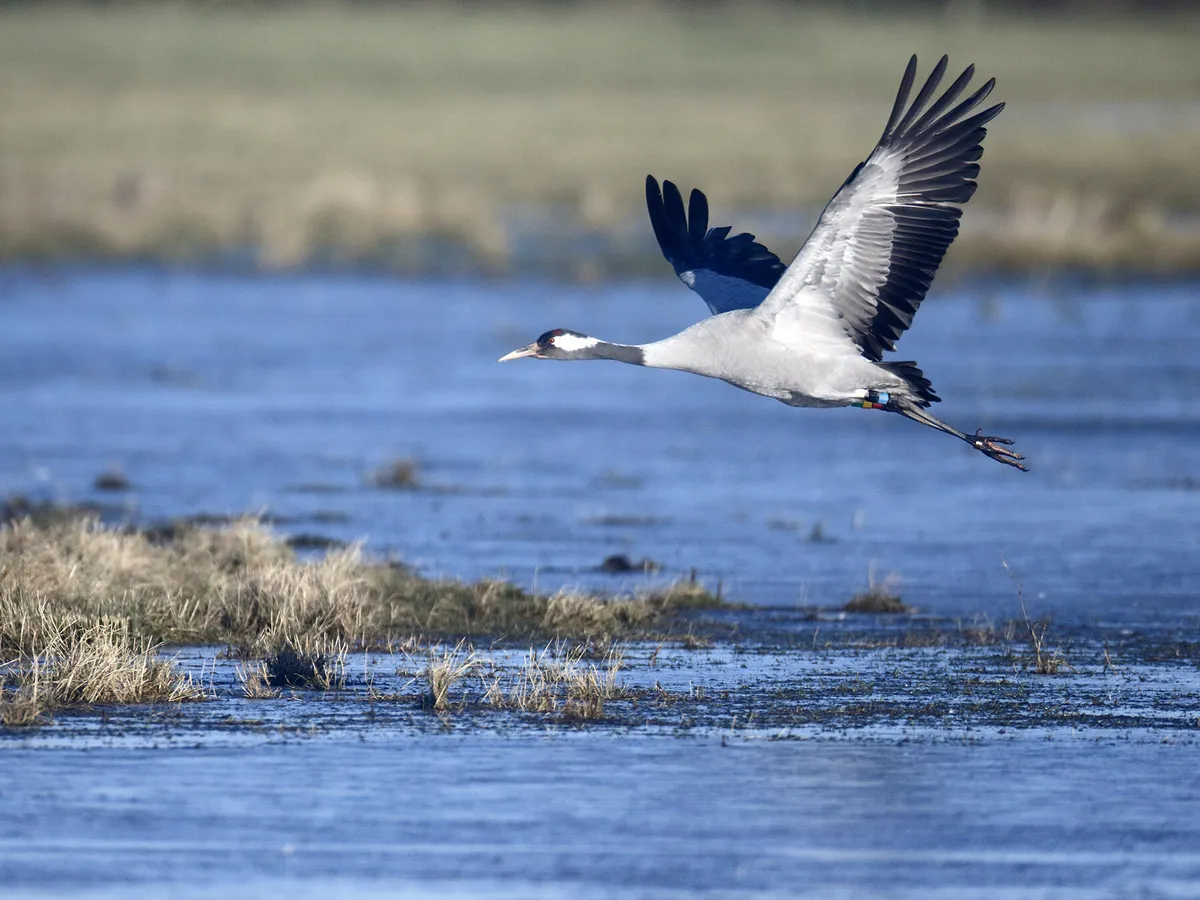
Flying Crane
Geographically, common cranes are mostly located in the northern parts of the Palearctic which spans from Scandinavia to Eastern Siberia. They can also be spotted in small populations within the British Isles. Come winter season, these cranes head south from their breeding grounds and fly to Southern Europe, Eastern China, Northern India, North Africa and Western Asia.

Young Cranes
Identifying Indicators and Tips
The breeding sites for juvenile cranes are often found in marshy or boggy areas within secluded forests. During the spring, these young birds display an impressive courtship routine that involves dancing, leaping, and trumpeting in large numbers. The adult crane’s patternation is unique and can be spotted among massive flocks during migration. For identification purposes, when viewed from below, the long black under neck contrasts with the pale grey body, tail, and fore wing area. The fingered wing tips are black, and the wing trailing edge is dark. The common crane’s flight pattern is not specific, making it possible to spot them in a V formation, a single line of many birds, or a simple haphazard group. Their long legs trailing behind them and their distinctive trumpet calls make for an awe-inspiring sight.
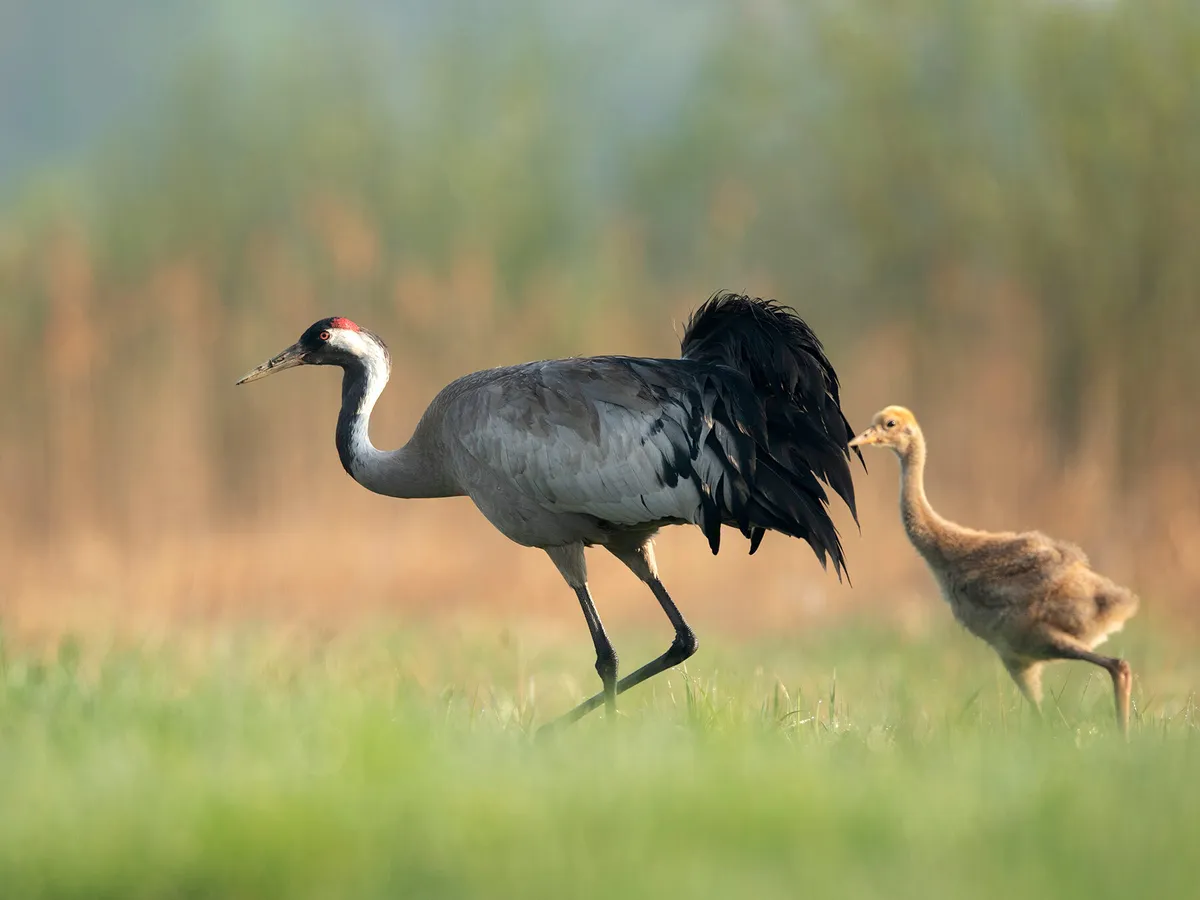
An adult crane alongside its offspring
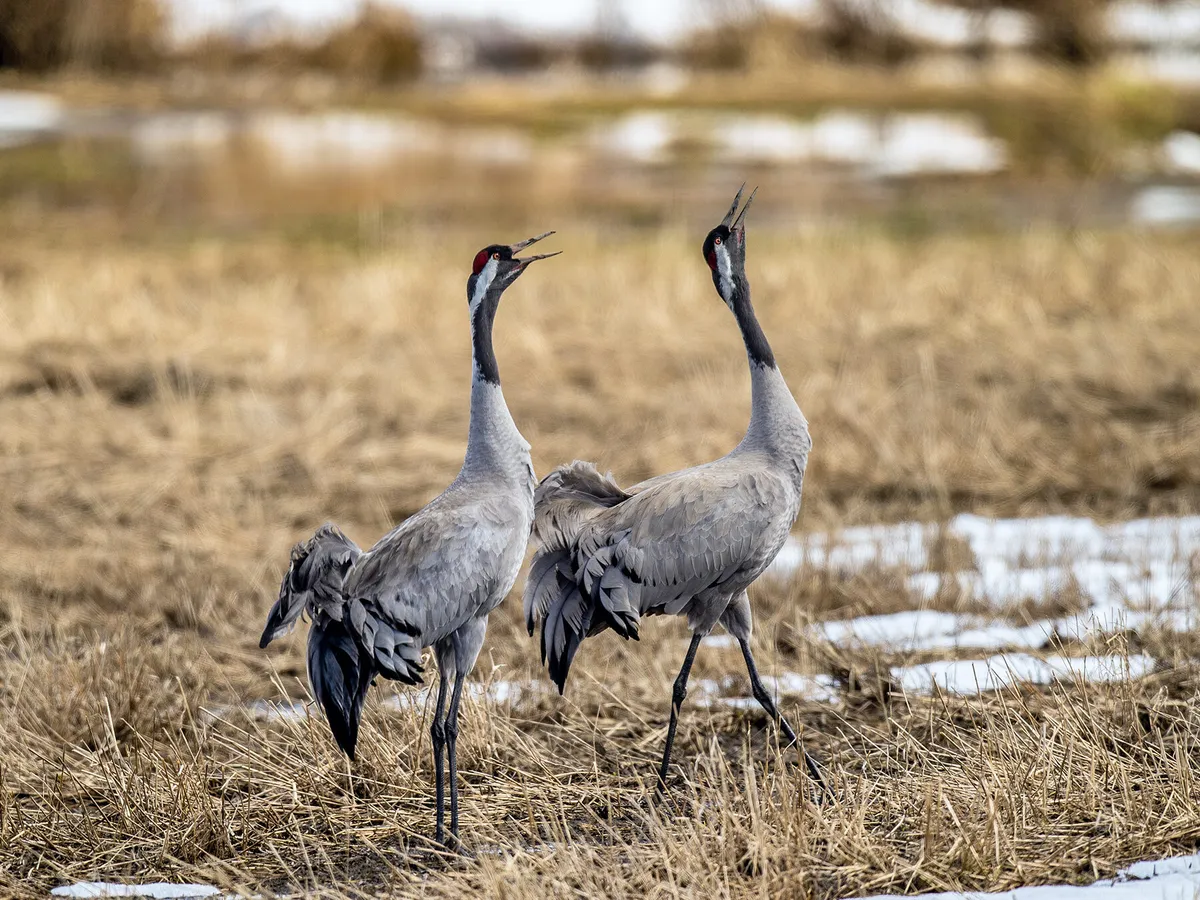
The common cranes have a unique way of starting their breeding season. Though they are known to be monogamous, they begin their mating ritual with mutual displays of dancing and courtship. It is during this time that they build a large mound of reeds and marshy vegetation on the ground, either in the water or close to it. In the month of May, they lay a clutch consisting of two buff-colored eggs that are speckled with mid and dark brown splodges. These eggs are incubated for approximately 31 days. Fledging typically takes place between 65 to 70 days later, and it may take up to six years for the crane to reach full sexual maturity.
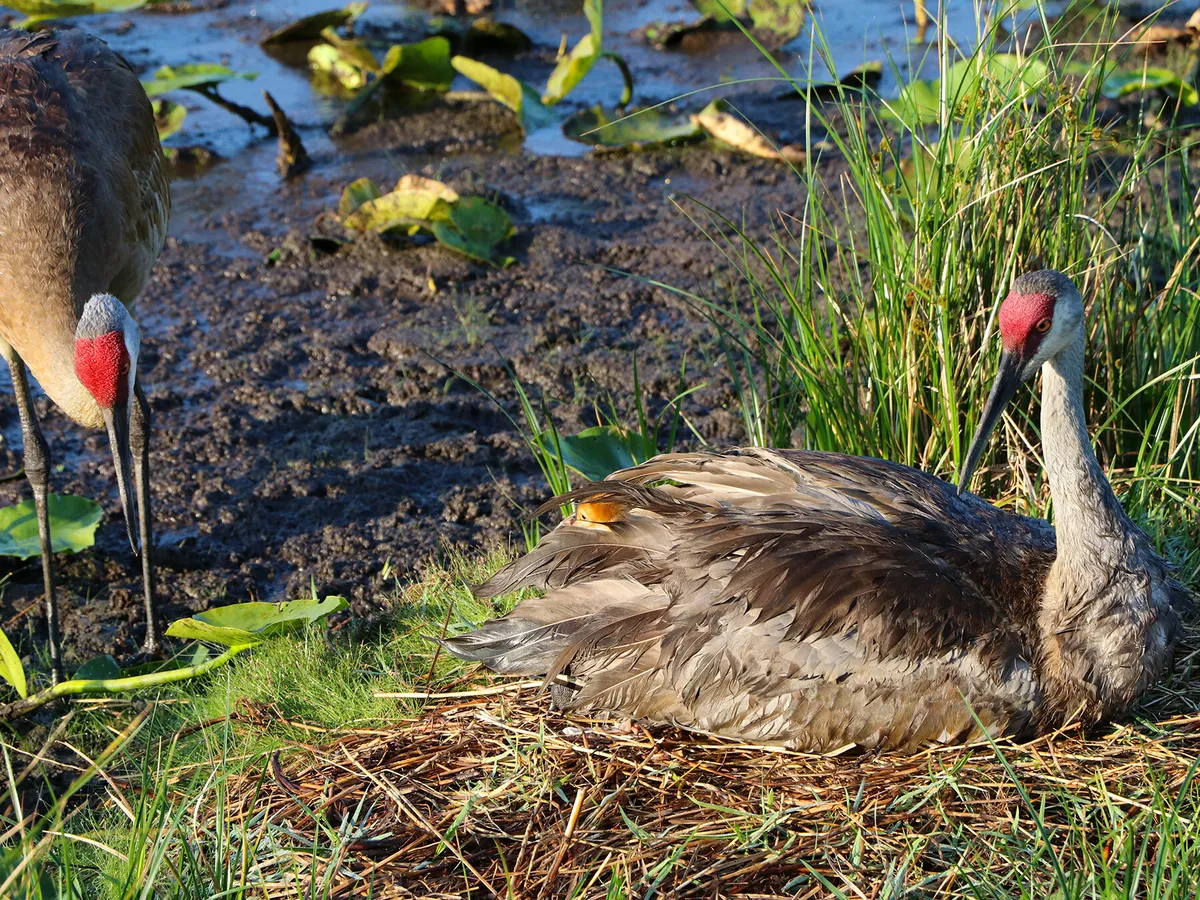
A bird called Crane is perched on top of its nest.
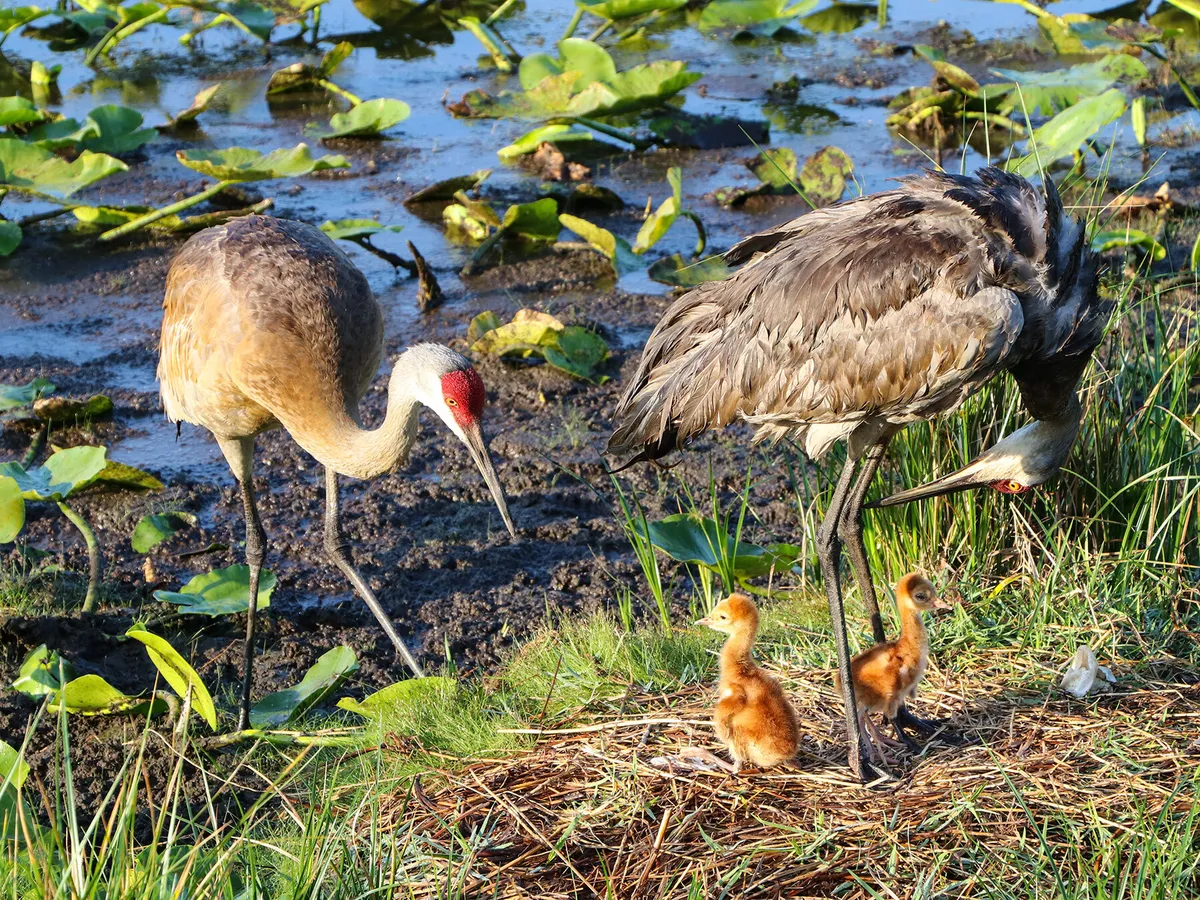
A family of Common Cranes, including their adorable chicks, is a delightful sight to behold! If you’re curious about how long these majestic birds live, the answer is up to two decades. So, they have plenty of time to soar high in the sky and explore the world around them.




